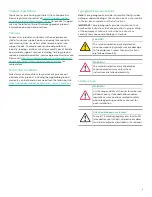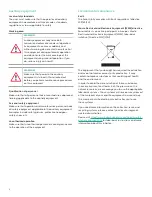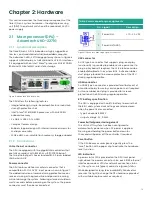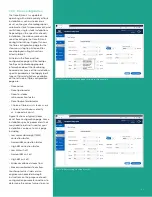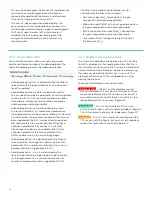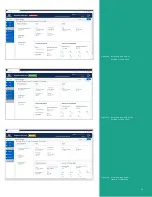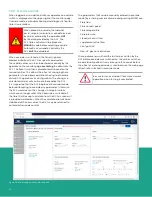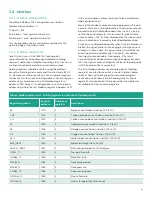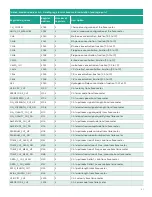
3.2.2 Flare meter validation
Ultrasonic flare flow meters are widely used in refineries
and petrochemical plants for flare operation and emission
control. Regulatory compliance requires these flare flow
meters to be validated periodically to meet their expected
performance per the manufacturer’s specifications.
Currently, this typically requires a service engineer to
travel to the meter installation site, conduct a visual
and/or physical inspection of the meter hardware and
components, access the electronics and/or transducers
to collect performance/diagnostic data for a prescribed
period, and generate a pass/fail evaluation report
for the meter after performing certain tests and
reviewing the data.
A key new feature of the flare.IQ Gen 2 is digital
verification, a new software as a service offering to
realize this periodic meter validation in situ. This feature
obviates the logistical complications of a service visit
and plant/process interruption that may be required to
access the meter. This feature has been implemented
by building in the intelligence required to conduct
digital verification of a flare meter in situ without
human intervention into the flare.IQ Gen 2 system. The
flare meter verification algorithm relies on a “reference”
measurement of the vent gas composition which
could be done with an online analyzer such as a gas
chromatograph or mass spectrometer where available.
It also uses as input the flare pressure and temperature,
flow meter data and diagnostics. The overall logic of
the flow meter validation scheme is shown in figure 9.
The main objective of the digital validation is to verify that
the flare meter is functioning as designed without having to
physically access its hardware. Since the flare monitoring
application is inherently noisy and variable, flow validation
requires a stable flare process, which usually happens when
there is no/low flaring event. In this case, vent gas flow rate
is normally low, and flare gas compositions are relatively
simple and constant.
The high-level logic for the GF meter performance validation
is illustrated in figure 10. flare.IQ uses a FIFO buffer to track
meter performance and diagnostics data over the last
8 hours. If an on-demand validation is initiated by the
end user, flare.IQ will analyze the last 8-hour data and
report a result as one of the following –
a. Pass
b. Fail
c. Process unstable for validation
If the validation is initiated on a pre-determined schedule,
this validation will operate on an automated fashion on
the last batch of 8-hour data available. At the end of each
digital verification cycle, a summary meter validation report
and the raw data (over the entire 8-hour block) used for
generating the report are saved in CSV format.
When enough data (8 hours)
is available for test
Validation initiated by an
“on demand’ button on UI or
by a programmable timer
(1st day of each month)
Report out:
Process not stable
for validation
Report out:
fail (contact
Panametrics
service)
Perform diagnostics
validation
Perform sound
speed validation
Both validations
passed?
Perform
stability test
Report out:
pass
Fail
Pass
Pass/fail
Pass/fail
Yes
AND
No
Figure 10: Flare flow meter validation logic
Online
flare gas
analyzer
Flare.IQ with
validation
algorithm
Pass/fail/process
unstable for
validation
Modbus TCP
Sound speed, channel
velocities, diagnostics
Customer
DCS
Ultrasonic flare
flow meter
Pressure
+ temp
Figure 9: Digital flare flow meter validation scheme
16
Summary of Contents for flare.IQ Generation 2
Page 1: ...flare IQ Generation 2 Operation and maintenance manual...
Page 2: ...2...
Page 3: ...flare IQ Generation 2 Operation and maintenance manual 910 350 rev A June 2020 3...
Page 4: ...no content intended for this page 4...
Page 38: ...Figure 30 System wiring diagram 38...
Page 48: ...48...




